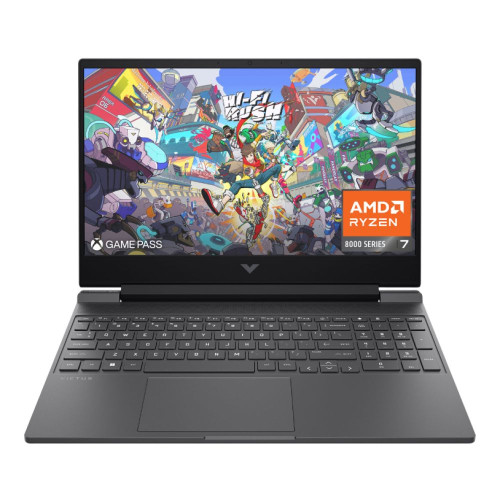POSTED: 13 August, 2025
144Hz Gaming on a Budget: Required Specs and Affordable Builds
For gamers chasing smoother, sharper, and more responsive gameplay, a 144Hz gaming laptop is one of the best upgrades you can make. A higher refresh rate means more frames are displayed every second, giving you that competitive edge in fast-paced titles like Apex Legends, CS2, and Fortnite. The good news? You don’t have to spend thousands to enjoy this kind of buttery-smooth performance.
Whether you’re a casual gamer looking for a better visual experience or an esports enthusiast who needs every millisecond advantage, it’s now possible to find affordable laptops that deliver solid 144Hz laptop performance without sacrificing build quality. Thanks to recent hardware improvements, even entry-level gaming laptops can now push competitive frame rates on a budget.
In this guide, we’ll break down the specs you need for 144Hz gaming, explore budget-friendly options from leading brands like HP, ASUS, Acer, and MSI, and share tips to get the most from your setup. If you’re ready to level up your gaming without emptying your wallet, you’re in the right place.
Why 144 Hz Matters for Gaming:

A 144Hz gaming laptop refreshes the display 144 times per second, compared to the standard 60 times per second on a typical screen. That difference means you’ll see more frames within the same time window, resulting in smoother animations, reduced motion blur, and sharper target tracking. In fast-paced games like Valorant, Apex Legends, and Overwatch 2, this can be the deciding factor between a win and a loss.
Beyond competitive gaming, a 144Hz laptop also makes everyday use feel more responsive. Scrolling through web pages, editing video, or simply moving windows around feels noticeably smoother. It’s one of those upgrades you can’t “unsee” once you’ve experienced it.
While higher refresh rates like 240Hz and 360Hz exist, they’re overkill for most budget-conscious gamers and require more expensive hardware to drive them effectively. For those seeking a balance of performance, cost, and visual quality, 144Hz gaming laptops hit the sweet spot.
Tip: Pairing your high-refresh display with the right GPU ensures you consistently hit the frame rates needed to take advantage of it.
Key Specs Needed for 144 Hz Gaming on a Budget
To get the most from a 144Hz gaming laptop, you’ll need hardware that can consistently push enough frames to match the display’s refresh rate. Here’s what to look for when shopping on a budget:
1. Graphics Card (GPU) – The Core of 144Hz Performance
Your GPU is the biggest factor in whether your laptop can maintain high frame rates. For budget builds, aim for at least an NVIDIA GTX 1650 or RTX 3050, or an AMD Radeon RX 6600M. These cards can handle popular esports titles like CS2 and Fortnite at 144Hz in 1080p. If you can stretch the budget, an RTX 3060 offers better longevity.
2. Processor (CPU) – Keeping Up with the Frames
A fast CPU ensures your GPU isn’t bottlenecked. AMD Ryzen 5 and Intel Core i5 chips are excellent mid-tier choices that can keep frame rates steady in competitive games. Pair them with 16 GB of RAM for optimal performance, especially in modern titles that demand more memory.
3. Display Panel – Where 144 Hz Comes to Life
Look for a Full HD (1080p) IPS panel gaming monitor with a native 144 Hz refresh rate. IPS offers better colours and viewing angles than TN panels, making it better for both gaming and general use. While 1440p is tempting, it’s harder for budget GPUs to consistently hit 144 FPS at that resolution.
4. Cooling & Thermal Design – Sustaining Performance
Even affordable laptops can throttle performance if cooling is inadequate. Choose models with efficient fan designs, large vents, and ideally, multiple heat pipes. Better cooling means your system can maintain high frame rates without overheating.
Affordable 144 Hz Laptop Builds for 2025:

You don’t need to drop premium-level cash to get a capable 144Hz gaming laptop. Here are three budget-friendly tiers that balance performance, build quality, and affordability.
1. Entry Budget Build (~£700–£900)
If you’re looking for the cheapest way into smooth high-refresh gaming, this range offers solid esports performance without overcomplicating things.
Example Build:
-
GPU: NVIDIA GTX 1650
-
CPU: AMD Ryzen 5 or Intel Core i5 (11th/12th Gen)
-
RAM: 8–16 GB (upgradeable)
-
Display: Full HD 144 Hz IPS panel
A great starting point would be an option from ASUS gaming laptops with a GTX 1650 or RTX 3050, perfect for titles like CS2, Valorant, and Rocket League. While AAA titles may need settings adjustments, it’s a solid way to get into 144Hz gaming on a tight budget.
Top Picks:
2. Mid-Budget Pick (~£900–£1100)
For gamers who want better future-proofing and more headroom for demanding titles, this tier offers GPUs like the RTX 3050 or RTX 3050 Ti.
Example Build:
-
GPU: NVIDIA RTX 3050 / RTX 3050 Ti
-
CPU: Intel Core i5 (12th/13th Gen) or AMD Ryzen 5 6000 series
-
RAM: 16 GB
-
Display: Full HD 144 Hz IPS
An Acer gaming laptop in this category delivers great performance in esports titles and can run newer AAA games at medium-to-high settings while keeping 144 FPS in competitive titles.
Top Picks:
3. Value Performer (~£1100–£1300)
If your budget allows for a little more, this is where you’ll find laptops with RTX 4060 GPUs, capable of smashing 144 Hz even in demanding titles at high settings.
Example Build:
-
GPU: NVIDIA RTX 4060
-
CPU: Intel Core i7 or AMD Ryzen 7
-
RAM: 16 GB (with 32 GB upgrade potential)
-
Display: 1080p or 1440p 144 Hz IPS
An HP gaming laptop in this range is an excellent all-rounder, offering strong performance in competitive and single-player games, plus better thermal designs for sustained high refresh rates.
Top Picks:
Pro Tip: An MSI gaming laptop can also be a great choice in both mid and high tiers, often offering better cooling and keyboard quality without a huge price premium.
Tips to Maximise Your 144 Hz Experience Without Spending More

Even the best 144Hz gaming laptop can struggle if it’s not set up properly. With a few smart tweaks, you can squeeze more performance from your machine without touching your wallet.
1. Optimise In-Game Settings
Lowering certain settings like shadows, post-processing, and anti-aliasing can drastically boost FPS while keeping visuals sharp. Competitive gamers often run esports titles at medium or low settings to ensure they stay at or above 144 FPS.
2. Enable Dual-Channel RAM
If your laptop comes with a single RAM stick, adding another to run in dual-channel mode can boost frame rates in CPU-heavy games. This is one of the most cost-effective upgrades for affordable laptops aiming for stable high-refresh gameplay.
3. Keep Your Drivers Updated
GPU driver updates from NVIDIA and AMD often bring performance optimisations for new titles. Make a habit of checking for updates monthly.
4. Manage Your Thermals
Clean dust from vents every few months, and consider an external cooling pad to keep performance consistent. A cooler gaming laptop will maintain its boost clock speeds for longer, improving your chances of sustaining 144 FPS.
5. Use Performance Power Modes
In Windows, set your power plan to “High Performance” or “Best Performance” when gaming. This prevents the CPU and GPU from downclocking unnecessarily.
Final Thoughts:
Getting a 144Hz gaming laptop in 2025 doesn’t have to drain your bank account. With smart hardware choices, like pairing a capable mid-tier GPU with a fast CPU, adequate RAM, and a reliable cooling system, you can enjoy smooth, responsive gameplay without paying flagship prices.
From affordable laptops running GTX 1650 GPUs to more powerful RTX 4060 machines, there’s a build for every budget. Whether you choose an HP gaming laptop, an ASUS gaming laptop, or an Acer gaming laptop, you’ll find high-refresh performance that keeps up with your competitive ambitions.
Now that you know the specs and builds to aim for, all that’s left is to fine-tune your settings, keep your system cool, and enjoy the buttery-smooth experience that 144 Hz gaming brings. Your frames are waiting! Go claim them.
FAQs
1. What GPU do I need for 144 Hz gaming?
For budget-friendly 144 Hz gaming at 1080p, a GTX 1650 or RTX 3050 is a solid starting point. For better future-proofing, consider an RTX 3060 or 4060.
2. Is 144 Hz noticeably better than 60 Hz?
Yes, animations feel smoother, motion blur is reduced, and input response feels snappier, especially in fast-paced or competitive games.
3. Can a budget laptop handle 144 Hz gaming?
Yes, many affordable laptops now include GPUs capable of running esports titles at over 144 FPS in 1080p, especially when paired with a decent CPU and enough RAM.
4. How much RAM is recommended for 144 Hz gaming?
16 GB is the sweet spot for modern games. Dual-channel RAM provides the best performance.
5. Should I prioritise refresh rate or GPU power?
Both matter, but if your GPU can’t push enough frames to match 144 Hz, you won’t fully benefit from it. Ideally, balance a capable GPU with a 144 Hz display.




